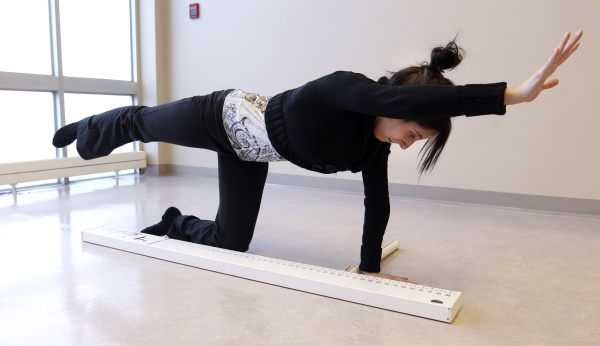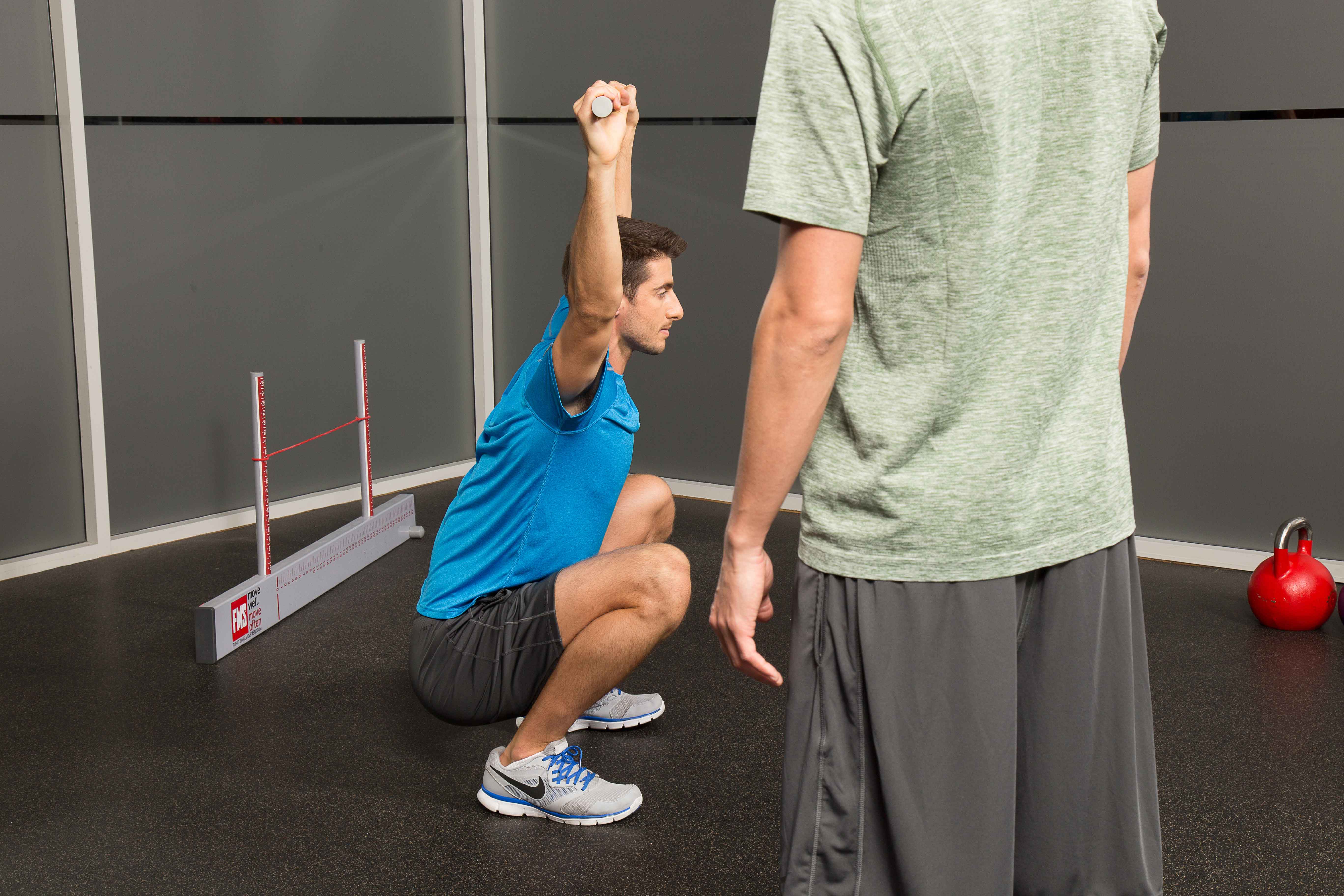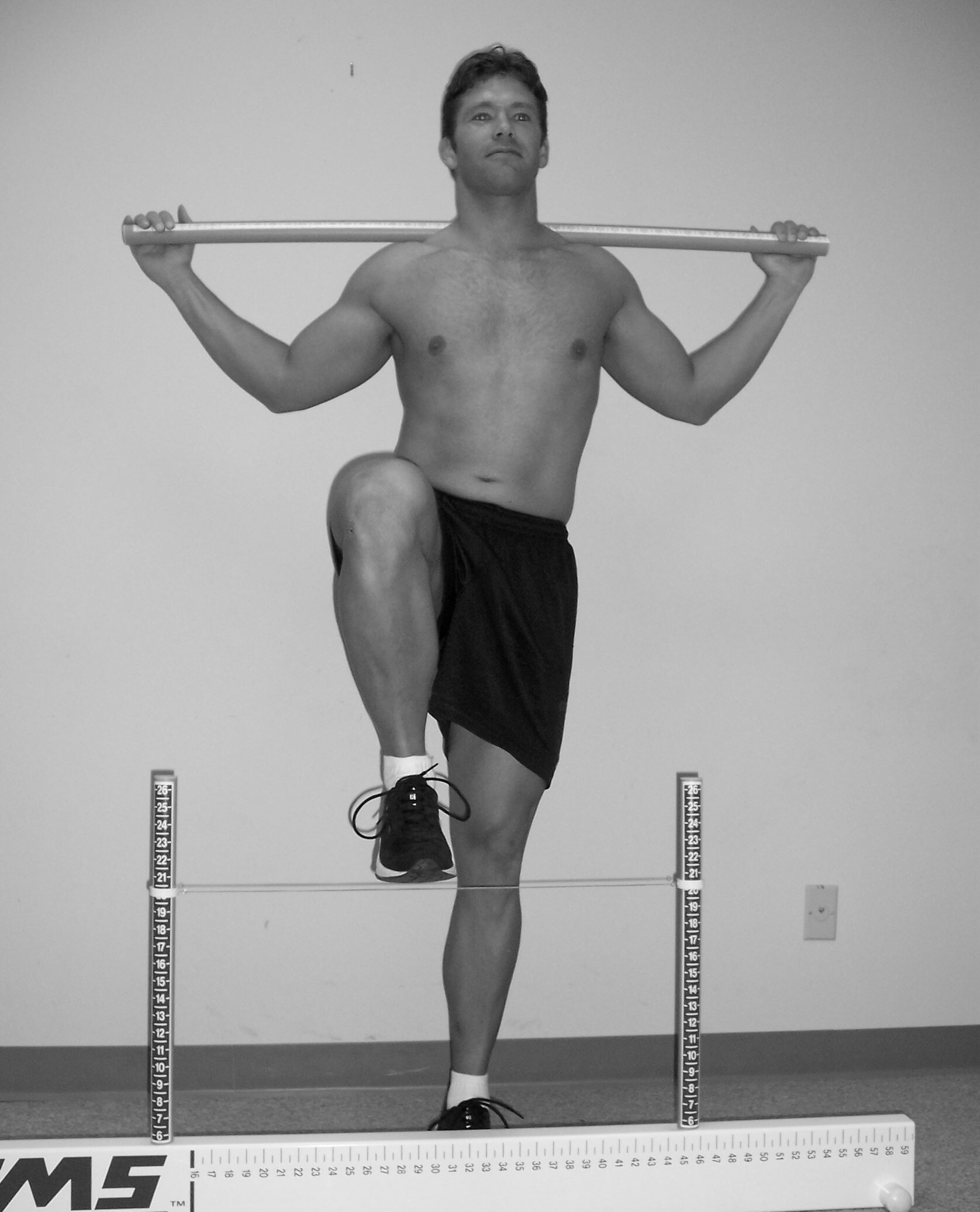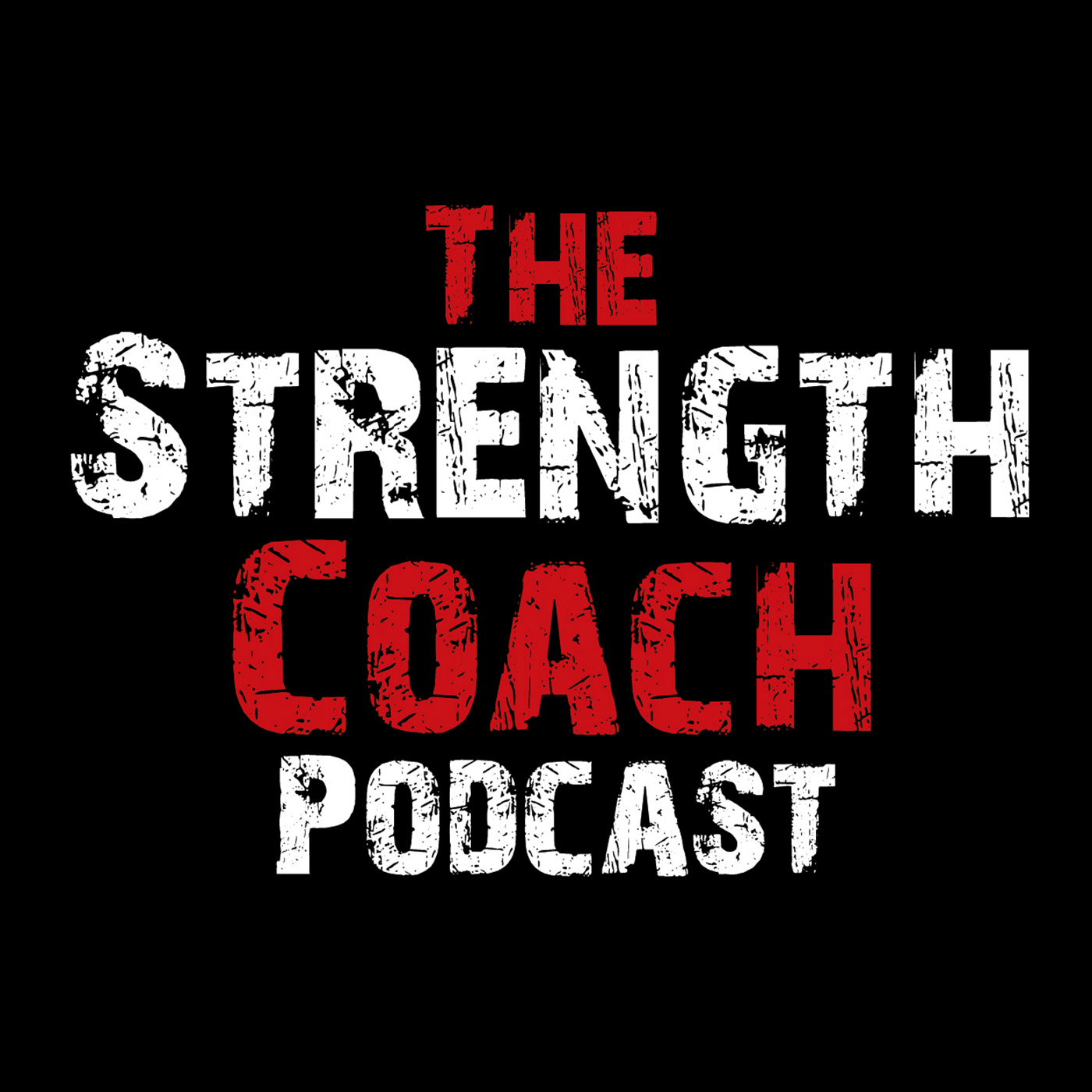Pain, Dysfunction and Load
Written by Brett Jones FMS

Likely one of Gray’s most famous lines is: “Don’t add strength to dysfunction.” Let’s peel the layers back a bit on this and take a deeper dive into what pain, dysfunction and load mean within the FMS.
As movement screening professionals, we discuss movement in four general categories.
Functional, Dysfunctional, Painful and Non-Painful. Functional means the individual has full access to that pattern. Dysfunctional means the person does not have full access to the pattern.
Painful means there is pain associated with that pattern and Non-Painful means there is no pain with the pattern. So, you can have four combinations of movement with regards to pain and function:
- Functional/Non-painful: full access and no pain
- Functional/Painful: full access and pain
- Dysfunctional/Non-painful: limited access and no pain
- Dysfunctional/Painful: limited access and pain
This is how we categorize movement in the SFMA. In the FMS, we categorize by score, but 1’s (limited access to a pattern) and Zero’s (pain with a pattern) are still part of the system. Correctly identifying pain and dysfunction are primary goals of the system whether you are an SFMA professional or FMS professional.
Quick side note re: language:
If I am screening “Grandma Betty” do you really think I’m going to tell her that she is “dysfunctional”???? Please remember client vs. professional communication and speak to the person/audience in front of you. If I am teaching a group of fitness and rehab professionals about the screen then words like “dysfunctional” are fine and we have an agreed upon meaning. (or at least we should) And once we understand that a “dysfunctional” movement pattern simply means that there is a lack of full access to that pattern the “scariness” goes away IMO. And if we can demonstrate the ability to quickly change and improve access to that pattern then we empower our clients!
Pain
Zero’s and pain in the FMS are going to have a recommendation for referral to a healthcare professional that can evaluate that pain and provide treatment if necessary. We have never said that a person needs to be “pain free” in order to train, but we do need to have a what and why for that pain and the assistance of a healthcare professional for appropriate recommendations. These Zero’s and recommendations from healthcare professionals assist us in proper programming and exercise selection.
What is pain? “Pain scientists are reasonably agreed that pain is an unpleasant feeling in our body that makes us want to stop and change our behaviour.” Lorimer Moseley
He continues: “Pain depends upon the brain evaluating a massive amount of information, including danger data from the danger detection system, but also cognitive data (for example expectations, previous exposure, cultural and social norms, beliefs – the context is critical [4]) and other sensory data (for example that from vision [5], or that from other sensors in the area).” http://www.bodyinmind.org/what-is-pain/
Our understanding of pain has progressed tremendously over the last few years and it is a multifactorial experience that we as fitness professionals need to work with Healthcare providers to treat and work with appropriately. What we do know is that pain alters motor control and whenever possible we want to look at movement uncomplicated by pain. Gray’s question has always been: “Are you moving poorly because you are in pain or are you in pain because you are moving poorly?” The only way to know is to take the pain out of the equation.
Dysfunction
Limited access to a pattern or “dysfunction” is addressed through corrective exercises or drills, but also includes the application of not loading dysfunction (knowing what “not” to do) and looking beyond movement to lifestyle. Lifestyle can include sleep, nutrition, programming, stress, breathing etc… It is very possible that a client does not have a “movement dysfunction,” but is displaying poor movement due to bad programming, bad diet or working at a desk for 8-10 hours a day. You cannot “out FMS” bad nutrition and improper programming. A holistic approach means looking at all factors. Knowing what not to do is sometimes more important than adding something to mix. So, our first stop towards improving movement is to know what to stop doing not what drill to add.
With a repeatable baseline and guiding principles corrective exercise can be applied where needed and a simple change in programming can be applied when needed.
When corrective drills are needed they are directed toward the pattern within our corrective algorithm order. You don’t have to fix everything but addressing the “right” thing can create change in other patterns. Also, remember that only scores of ‘1’ are going to get correctives so the baseline and our principles guide us. If you are not going to use a baseline and are going to try to “fix everything” I think you are going to be frustrated.
And similar to the benefit of taking pain out of the equation, addressing movement patterns that you cannot access allows us to be more confident that a fault seen in an exercise is a technique fault. But if you don’t “clear a baseline” first then technical flaws in an exercise have to also be checked for movement issues. Why try to address technique when it could be complicated by patterns you cannot access fully? All the technical cues and coaching will not address an ankle mobility issue while trying to learn how to do a single leg squat for example. For example, if a single leg squat is limited by ankle mobility, technical cues and coaching will have limited effect.
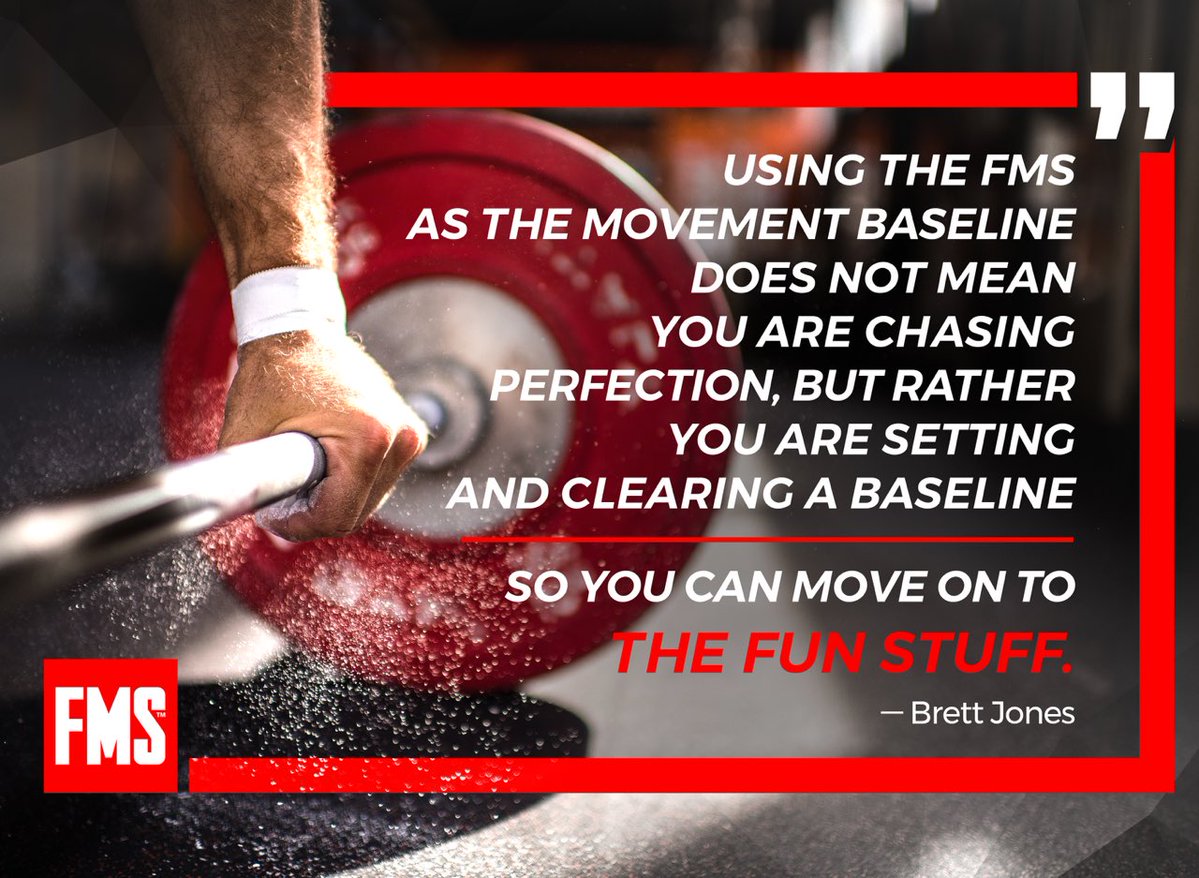 Take movement issues out of the equation first and realize that clearing a movement baseline does not ensure perfect exercise technique, but it means you can be more confident that the technical flaw is a technical flaw and the person you are coaching moves well enough to be able to adapt to the cueing and coaching.
Take movement issues out of the equation first and realize that clearing a movement baseline does not ensure perfect exercise technique, but it means you can be more confident that the technical flaw is a technical flaw and the person you are coaching moves well enough to be able to adapt to the cueing and coaching.
Load
All FMS corrective strategies and programming build toward loading patterns. The SFMA mantra is Reset – Reinforce – Reload and the FMS uses this as appropriate for the fitness professional. Where a reset for a clinician may mean manual therapy, it may mean a bit of foam roller and re-patterning work for the fitness professional. But we both build and progress toward load as soon as possible to “hit save on the document” as Gray would say. For example, a shortened range Single Leg Deadlift can be used as improvements in an Active Straight Leg Raise pattern are made to reinforce and reload that pattern to make changes more efficient. Partial Get-ups with a Kettlebell can be used early in a Shoulder Mobility pattern corrective strategy. And so on…
There is a growing body of evidence that load and exercise are key to healthy movement and health itself: http://time.com/4475628/the-new-science-of-exercise/
Conclusion
FMS appreciates strength and load. They are tools necessary to improving performance and movement. “Don’t add fitness to dysfunction” reminds us to clear the baseline and hold true to our principles.
Author
 Brett Jones, StrongFirst Director of Education, is a Certified Athletic Trainer and Strength and Conditioning Specialist based in Pittsburgh, PA. Mr. Jones holds a Bachelor of Science in Sports Medicine from High Point University, a Master of Science in Rehabilitative Sciences from Clarion University of Pennsylvania, and is a Certified Strength & Conditioning Specialist (CSCS) from the National Strength and Conditioning Association (NSCA).
Brett Jones, StrongFirst Director of Education, is a Certified Athletic Trainer and Strength and Conditioning Specialist based in Pittsburgh, PA. Mr. Jones holds a Bachelor of Science in Sports Medicine from High Point University, a Master of Science in Rehabilitative Sciences from Clarion University of Pennsylvania, and is a Certified Strength & Conditioning Specialist (CSCS) from the National Strength and Conditioning Association (NSCA).
With over twenty years of experience, Brett has been sought out to consult with professional teams and athletes, as well as present throughout the United States and internationally.
As an athletic trainer who has transitioned into the fitness industry, Brett has taught kettlebell techniques and principles since 2003. He has taught for Functional Movement Systems (FMS) since 2006 and has created multiple DVDs and manuals with world-renowned physical therapist Gray Cook, including the widely-praised “Secrets of…” series.
Brett continues to evolve his approach to training and teaching and is passionate about improving the quality of education for the fitness industry.
He is available for consultations and distance coaching by e-mailing him at appliedstrength@gmail.com.



